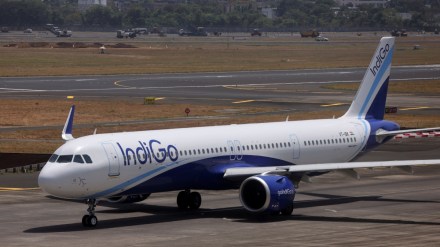IndiGo has turned 18 and wants to spread its wings. Starting mid-November, the no-frills carrier which commands an enviable 60% plus of India’s local air traffic, will roll out business class seats— IndiGo Stretch. To begin just about a dozen flights, connecting New Delhi with the country’s main metros, will offer a dozen business class seats priced at around Rs 18,000 apiece. CEO Pieter Elbers has described it as a tailor-made product “on the busiest and business routes”.
To be sure, the product may not make the cut for an international traveller. Some experts say the IndiGo Stretch is not a pure ‘business-class’ proposition, it’s just a better seat that’s priced three times the economy class fare. That may be so. But, for the local business traveller, reclining seats, more leg room and healthy curated meals— could be a big draw. As Aditya Ghosh, who ran IndiGo for several years, has observed, these are some of the comforts that travellers are willing to pay for. Apart from on-time arrivals, safety and new airplanes, passengers Ghosh said, are also willing to pay for extra leg room, better food and even choice of food.
IndiGo isn’t trying to go the whole way. For instance, hot meals won’t be served just yet and there’s no access to lounges. The seat pitch itself is 38 inches compared with Air India’s 40 inches. That’s the space between one point on a seat and the same point on the seat in front. Also, IndiGo’s seats reclines five inches, which is a little less than Air India’s seven inches. The width of the seats though is comparable— 21.3 inches on IndiGo against 21 inches on Air India.
So are some of the other amenities–in-seat charging ports, electronic device holders and adjustable head rests. “It might not have top-class entertainment but utilities such as charging points and device holders would be useful for business travellers,” says an expert.
At Rs 18,000 a seat compared with an average cost for an Air India ticket of Rs 25,000 on a Delhi-Mumbai route, there could be takers. That there is good demand for more comfortable and better-serviced seats is seen from the success of Vistara’s premium economy initiative. Aman Chowdhary, analyst at Motilal Oswal, believes there are enough well-off travellers in India willing to pay for a better experience.
“If the Vistara brand, which has been so popular, goes off the market post the merger with Air India, that would create even more demand for IndiGo,” Chowdhary told FE. He feels the success of Vistara would have encouraged IndiGo to launch a business-class offering.
The propensity of Indians to spend on travel is no longer in doubt. There are currently just about 5,000 business and premium economy seats on offer. In fact, air travel is no longer limited to the affluent class. Jitendra Bhargava, former executive director, Air India, believes introducing a business class is a natural progression for an airline that already has a big chunk of the market.
“Where do you expand? IndiGo can now attract business-class passengers who currently patronise other carriers,” Bhargava points out. Jagannarayan Padmanabhan of CRISIL says it is important that IndiGo continues to innovate with the product so as to be able to maintain its market share.
Demand for business class seats, which account for roughly 10% of the total seats on offer, Padmanabhan says, is unsatiated and a good part of this is from the tier-2 cities where IndiGo has good connectivity. There is a sizeable number of businessmen in tier-2 cities who won’t mind coughing up the fare for a business class seat simply because it would mean a better experience while enhancing his status. “They may opt for Vistara but there would be enough spillover demand for IndiGo seats,” he says.
The economics of the exercise appears to be sound. Realisations from the business-class seats are around three times those from economy seats. The break-even levels—or the share of business seats that need to be sold cover for costs is an estimated 30%and selling a third of the 12 seats should not be a problem,
say analysts.
CRISIL’s Padmanabhan explains that once 30% of the business class seats are filled, the step-up in the pricing can be sharp. ‘A last-minute traveller-end could well end up paying 3x what the first few paid,” he points out. That then would improve the yields. Motilal’s Chowdhary says that while there may be some initial pressure on profits because of the investments made, over the longer term, the business class seats should fetch good yields and lift operating profits.
IndiGo’s bigger gameplan, it would appear, is growing its share in the overseas market. Founder Rahul Bhatia is making no secret of the airline’s ambitions; Bhatia said recently that by 2030, the airline would be twice its size, not just in terms of revenues but also the footprint. Bhargava observes that Indigo’s international franchise which would take off once the planes that it has ordered fly in, would help it change its profile.
The launch of the business class in the home market would give it the experience needed to operate on long-haul routes. IndiGo’s loyalty programme —IndiGo BluChip, may not be the best yet but can always be worked on to woo more corporate travellers. For IndiGo the IndiGoStretch can be good business.
